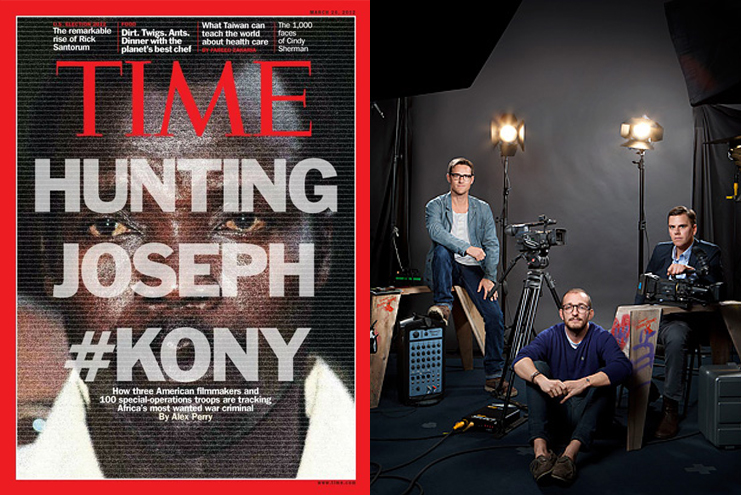Joseph Kony never saw it coming. For decades he has been invisible to most of the world; people didn’t know his name or his crimes. And now millions & millions of people know who he is, what he does, and have bonded together to stop him because of a 29-minute film. And so the TIME magazine article, The Warlord Vs. The Hipsters, recounts.
Outlining Invisible Children’s humble beginnings of three friends who stumbled upon tens of thousands of children who wouldn’t sleep at home for fear of being abducted by the rebels, the three turned into activists by making a documentary entitled Invisible Children: The Rough Cut. “In our world,” says co-founder & filmmaker Jason Russell, “abducting children, cutting people’s faces off, making children eat their friends–that just doesn’t happen. We thought, Once people know about this, it’s going to end in a year.” In 2004 and 2005, they traveled from high schools to college campuses, screening the film for hundreds of thousands of students. While the three founders worked to raise awareness, the LRA spread its atrocities from Uganda to Congo, South Sudan, and Central African Republic (CAR): “Despite the LRA’s never having mustered more than a few thousands fighters, the U.N. estimated that the group had killed tens of thousands, abducted tens of thousands more and displaced 1.5 million.”
To translate their swelling support into government action, they linked up with Resolve and the Enough Project and by 2008 Joseph Kony and the LRA was the top foreign issue for students all over the country. Channeling the focus and energy to Washington, by 2009 the organizations helped draft a bill calling for executive action and by early 2010 there was cross-party and dual-chamber backing and the bill was passed into law: “These young members of the Invisible Children organization…have helped make the children of Uganda visible to us. And now, with this legislation, we have a chance to truly join in this cause.” (Representative Susan Davis)
Going against precedent, the humanitarian groups lobbied for military action; to them it was a rational even necessary choice. Jason Russell says: “What’s more humanitarian than stopping a war? I understand the conviction that violence begets violence. But either you just go on pulling people out of the river or you go upstream, find out who is pushing them in and stop them.” In October of 2011 something happened that no one saw coming. President Obama committed to send U.S. military advisors: “When I decide to stand up for foreign aid or prevent atrocities in places like Uganda, it’s not just about strengthening alliances or promoting democratic values or projecting American leadership around the world, although it does all those things, and it will make us safer and more secure. It’s also about the biblical call to care for the least of these–for the poor; for those at the margins of our society.”
Ending the LRA, from Invisible Children’s point of view, is a precedent that will set a new standard for world justice. Russell says, “We want to take this campaign from a one-off to a world-changing moment. […] We need a new proactive machine to protect those being slaughtered. Then we can have a world where genocide and child soldiering do not exist.” With that, there has been much criticism ranging from the ‘white savior complex’ to the group over-simplifying the issue at hand.
The LRA operation ultimately is in the hands of how the special ops transact, and with that also comes concerns: manhunts take time and money, the budget is relatively small, there could be backlash and mass killing by the LRA. However, in Obo, the center of the LRA territory, hopes are high that Kony will be brought to justice.
That is the goal, after all.

Think people should hear about this?